Knowledge sharing | If your pet has a bad liver, Silybin can help
发布时间:2024-06-18
Hepatobiliary disease is one of the most common diseases in pet internal medicine. The liver is the largest metabolic organ in the animal body and is responsible for the synthesis and metabolism of the three major nutrients: protein, fat, and carbohydrate.Therefore, it is very important to nourish and protect the liver. Among them, there is a natural substance that plays an indispensable and important physiological role - "silybin".
Silymarin is a substance that we are relatively familiar with. It is composed of multiple flavonoids (silybin, isosilybin, silybin, isosilybin and silybin) and a flavonoid (cedarwood oil) [1]. Among them, silybin is the most important and has important biological effects, accounting for about 70% of the total components of silymarin [2][3].
Silybin is a flavonoid compound that has a significant effect in protecting and stabilizing liver cell membranes. It can improve liver function, produce an enzyme-lowering effect, and is less likely to cause enzyme rebound.

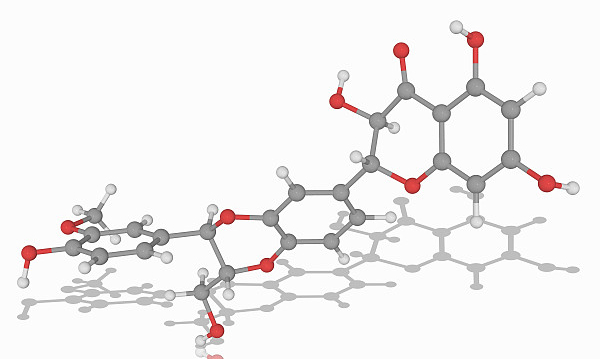
Silybin can stabilize the liver cell membrane, maintain its integrity, promote the recovery of liver cell ultrastructure, promote the division and growth of normal liver cells, improve the ability of liver cells to synthesize RNA and protein, improve the ability of the reticuloendothelial system to produce macrophages, enhance the activity of macrophages, and accelerate the clearance of viruses.
At the same time, silybin can promote fat transfer and antioxidant effects, prevent excessive fat oxidation and infiltration, reduce fatty degeneration of the liver, promote the metabolic function of the liver, enhance its detoxification effect, and reduce the damage of toxicants to liver cells.
Therefore, silybin has the effect of protecting normal liver cells and promoting the recovery of damaged cell membranes, and is often used in the adjuvant treatment of liver diseases.
The effects of silybin are manifested in anti-inflammation, anti-oxidation and regulation of cell apoptosis. In addition, silybin can enhance the chemotherapy effect of tumors and reduce the side effects of chemotherapy [4] [5] [6].
· Turning off pro-inflammatory signals generated by nuclear factor-κB (NF-κB) activation;
· Participates in inducing the synthesis of cytokines such as tumor necrosis factor α (TNF-α), interleukin (IL)-1, IL-6, and granulocyte-macrophage colony-stimulating factor (GM-CSF);
· It induces apoptosis by regulating the cytoplasmic levels of Bcl-2-like protein 4 (Bax) and B-cell lymphoma 2 (Bcl-2) proteins, the release of cytochrome c, and the activation of caspase-3 and 9;
· Anti-cancer, auxiliary blood sugar regulation, anti-fibrosis and cholesterol regulation, regulation of intracellular drug transport and other functions
Picture 1. Different therapeutic activities of silymarin.
IL-1/6: interleukin 1/6; TNF-a: tumor necrosis factor-a; IFN-y: interferon-y; GM-CSF: granulocyte-macrophage colony-stimulating factor; MAPK: mitogen-activated protein kinase; Bax: bc1-2-like protein 4; Bc1-2: B-cell lymphoma 2; IGF: insulin-like growth factor; α-SMA: α-smooth muscle actin; TGF-B: transforming growth factor-β; HSP: heat shock protein; PPAR-y: peroxisome proliferator-activated receptor Y; PI3K: phosphatidylinositol-4,5-bisphosphate 3-kinase; Akt: protein kinase B; HMG-CoA: 3-hydroxy-3-methylglutaryl coenzyme A; GLUT 4: glucose transporter type 4
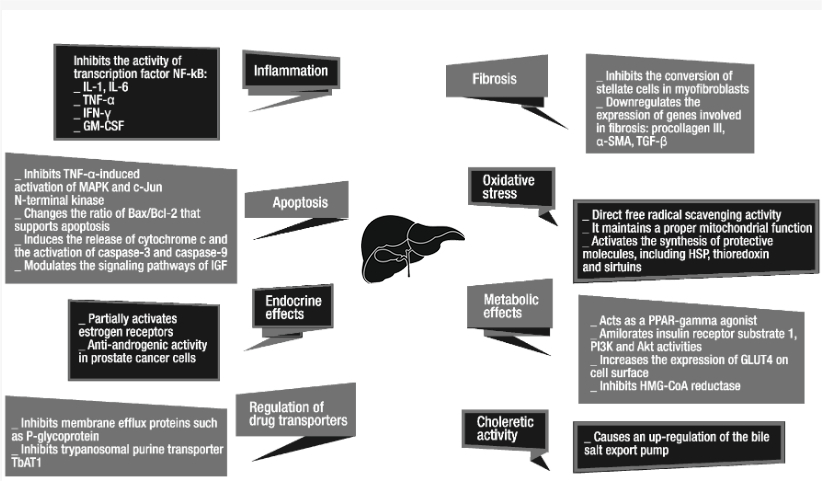
Silybin is primarily used as an antioxidant to protect the liver from toxin damage, particularly in acute hepatotoxin-mediated liver disease, and can also be used in animals receiving long-term treatment with potentially hepatotoxic drugs.
As an antioxidant and free radical scavenger, silybin can promote hepatocyte protein synthesis, increase glutathione levels, and promote bile flow and the production of hepatoprotective bile acids, while preventing the production of leukotrienes, thereby reducing inflammatory responses.
A large amount of literature currently proves that silybin is suitable for all common liver injuries and has three important activities: anti-inflammatory, antioxidant and pro-apoptotic, which represent the "functional triad" and have an inhibitory effect on the progression of the damage mechanism of hepatitis turning into cirrhosis or liver cancer.

Picture 2 The “functional triad” of silybin
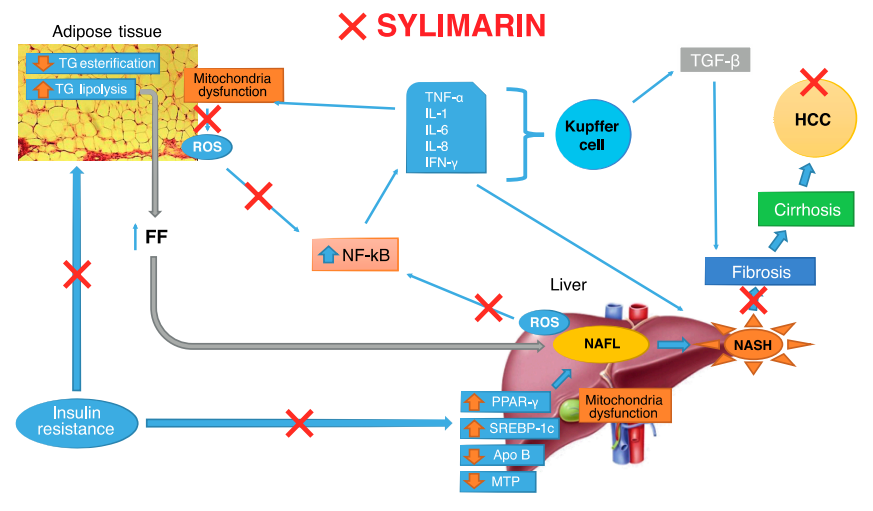
Picture 3 The therapeutic targets of silybin in non-alcoholic fatty liver disease
In terms of pharmacokinetics, silybin has a very low bioavailability. If administered orally, its solubility in water is relatively low. This is due to its low absorption efficiency in the intestine and increased metabolism in the first liver channel after absorption, resulting in a lower actual utilization amount that ultimately reaches the target organ [7][8][9].
Phosphatidylcholine-coated silybin technology can effectively improve this limitation. This complex has a higher absorption rate, high solubility, strong antioxidant capacity and high tolerance [10][11]. The combination of silybin and phosphatidylcholine forms a complex that can easily transcend the intestinal wall and reach the liver in higher levels.
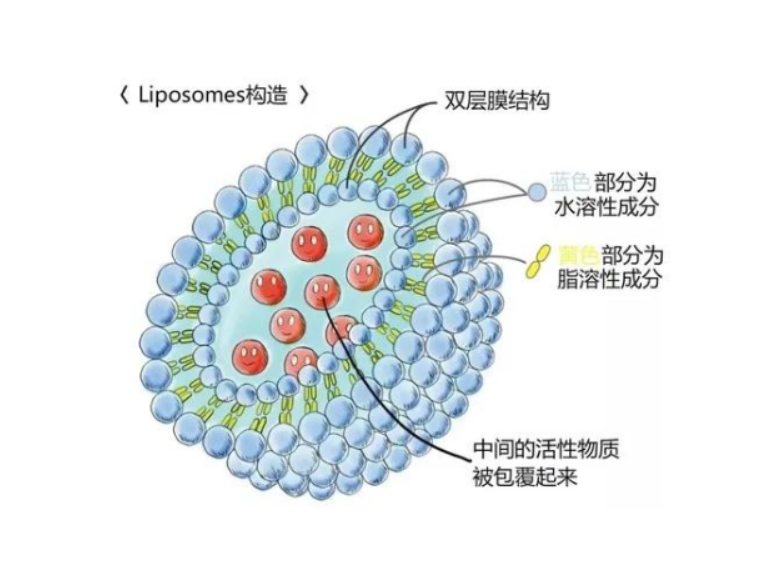
In a study of the safety and bioavailability of the complex by administering equal doses to beagles (4 males and 4 females), the results showed that the complex not only had a higher utilization rate than silybin, but also had no effect on the metabolic rate.On this basis, the combined use of zinc and vitamin E can enhance the liver protection effect, especially the protection after poisoning.
Comparison of key pharmacokinetic parameters in plasma of beagle dogs given equal doses of silybin & phosphatidylcholine (SPC)
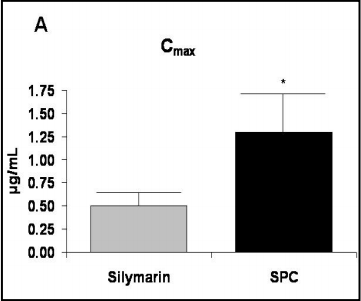
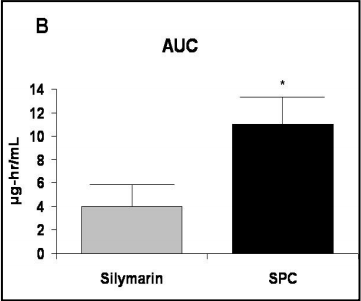

A: Maximum plasma concentration (Cmax)
B: 24-hour area under the curve (AUC)
C: Time to reach maximum concentration (Tmax)
It showed an increase to a maximum value of 1.31±0.31 μg/mL at 3 h, then returned to the initial level at 24 h, and the average area under the curve value was 300%-400% of that of standard silybin.

Picture 4 Safety and bioavailability of zinc and vitamin E combined with silybin and phosphatidylcholine in beagle dogs
Basic and clinical research has shown that loss of redox homeostasis is both a cause and a consequence of many forms of liver dysfunction. Various precipitating conditions, including metals, xenobiotics, phytotoxins, or insufficient metal intake (particularly zinc), and elevated levels of free radicals (ROS and RNS) can lead to cell damage and death.
While individual antioxidants, particularly silybin, vitamin E, and zinc, have been shown to improve one or more liver functions, research now confirms that combinations of these ingredients may provide even greater therapeutic benefits.
reference:
[1] Kim, N.C.; Graf, T.N.; Sparacino, C.M.; Wani, M.C.; Wall, M.E. Complete isolation and characterization of silybins and isosilybins from milk thistle (Silybum marianum). Org. Biomol. Chem. 2003, 1, 1684–1689. [Google Scholar] [CrossRef] [PubMed]
[2] Loguercio, C.; Festi, D. Silybin and the liver: From basic research to clinical practice. World J. Gastroenterol. 2011, 17, 2288–2301. [Google Scholar] [CrossRef] [PubMed]
[3] Crocenzi, F.A.; Roma, M.G. Silymarin as a new hepatoprotective agent in experimental cholestasis: New possibilities for an ancient medication. Curr. Med. Chem. 2006, 13, 1055–1074. [Google Scholar] [CrossRef] [PubMed]
[4] Saliou, C.; Valacchi, G.; Rimbach, G. Assessing bioflavonoids as regulators of NF-κB activity and inflammatory gene expression in mammalian cells. Meth. Enzymol. 2001, 335, 380–386. [Google Scholar] [PubMed]
[5] Polyak, S.J.; Morishima, C.; Lohmann, V.; Pal, S.; Lee, D.Y.; Liu, Y.; Graf, T.N.; Oberlies, N.H. Identification of hepatoprotective flavonolignans from silymarin. Proc. Natl. Acad. Sci. USA 2010, 107, 5995–5999. [Google Scholar] [CrossRef] [PubMed]
[6] Yoo, H.G.; Jung, S.N.; Hwang, Y.S.; Park, J.S.; Kim, M.H.; Jeong, M.; Ahn, S.J.; Ahn, B.W.; Shin, B.A.; Park, R.K.; et al. Involvement of NF-κB and caspases in silibinin-induced apoptosis of endothelial cells. Int. J. Mol. Med. 2004, 13, 81–86. [Google Scholar] [CrossRef] [PubMed]
[7] Saller, R.; Meier, R.; Brignoli, R. The use of silymarin in the treatment of liver diseases. Drugs 2001, 61, 2035–2063. [Google Scholar] [CrossRef] [PubMed]
[8] Hawke, R.L.; Schrieber, S.J.; Soule, T.A.; Wen, Z.; Smith, P.C.; Reddy, K.R.; Wahed, A.S.; Belle, S.H.; Afdhal, N.H.; Navarro, V.J.; et al. Silymarin ascending multiple oral dosing phase I study in noncirrhotic patients with chronic hepatitis C. J. Clin. Pharmacol. 2010, 50, 434–449. [Google Scholar] [CrossRef] [PubMed]
[9] Saller, R.; Melzer, J.; Reichling, J.; Brignoli, R.; Meier, R. An updated systematic review of the pharmacology of silymarin. Forsch. Komplementm